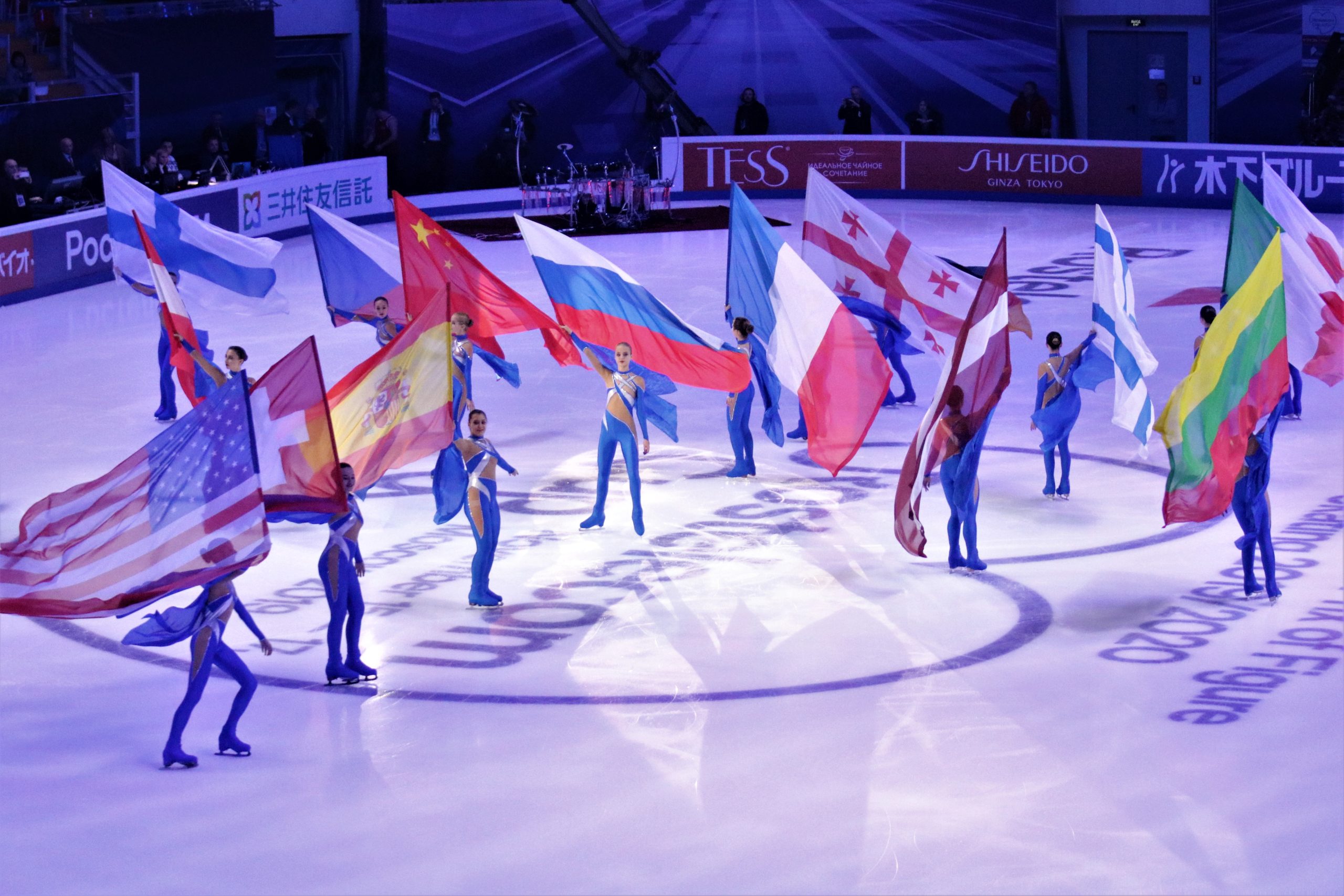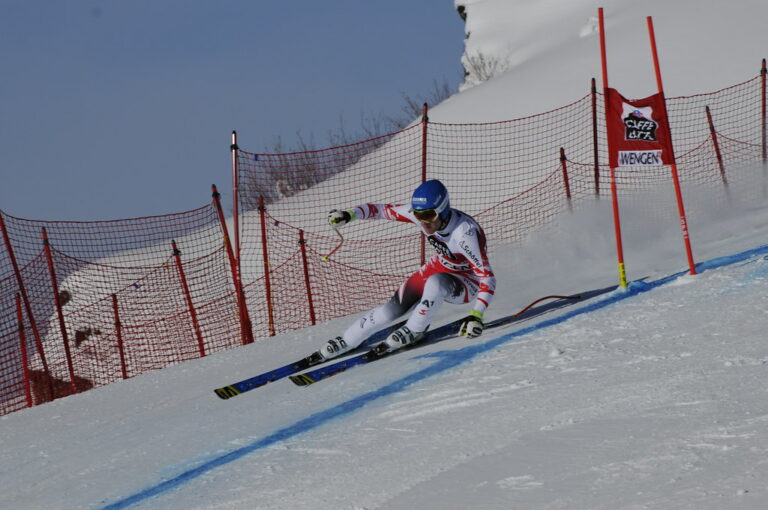General Rules of Winter Guard
Winter guard is an indoor activity that combines dance choreography, equipment work, and theatrical elements. Teams perform a program set to music using props like flags, rifles, and sabres. In order to compete successfully, it’s important to understand the general rules and scoring system. Regulations for timing, equipment specifications, competition area, and more all impact winter guard performances.

This article outlines the key rules and procedures for winter guard. We’ll cover equipment regulations including flags, rifles, and sabres. Timing requirements, performance space dimensions, scoring categories and sheets, penalty definitions, and general competition formats will be explained as well. Whether you’re new to the sport or an experienced performer, familiarizing yourself with the basics of winter guard rules is essential. Let’s begin by looking at the different types of authorized equipment.
Scoring Criteria
When evaluating your Winter Guard performance, judges will assess your group based on a set of scoring criteria. These criteria are designed to objectively evaluate the various aspects of your performance and determine your overall score. The scoring criteria typically include categories such as technique, design, coordination, and overall effect.
Technique refers to the technical execution of the routine, including the precision and accuracy of movements, equipment handling, and body control. Judges will closely observe the alignment, timing, and synchronization of your group members.
Design encompasses the overall visual and artistic elements of your performance. This includes the choice and arrangement of music, costumes, flags, and props. Judges will evaluate how well these elements contribute to the theme or concept of your routine.
Coordination assesses the teamwork and synchronization among your group members. Judges will look for seamless transitions, uniformity in movement, and effective use of space.
Overall effect evaluates the emotional impact and entertainment value of your performance. This category takes into account the energy, expression, and engagement of your group, as well as the audience’s response.
Understanding these scoring criteria can help you identify areas of strength and improvement in your Winter Guard performance. By focusing on technique, design, coordination, and overall effect, you can strive for excellence and enhance your chances of achieving a high score.
Equipment Regulations
To ensure a fair and consistent competition, you must adhere to the equipment regulations set forth by the Winter Guard governing body. These regulations are in place to ensure that all performers have an equal opportunity to showcase their skills and talents. It’s important to remember that the equipment used in Winter Guard routines is an essential part of the overall performance and can greatly impact the judges’ scoring.
First and foremost, all equipment must meet the safety standards set by the Winter Guard governing body. This includes ensuring that equipment is properly maintained and in good working condition. Any equipment that’s deemed unsafe or poses a risk to performers or audience members won’t be allowed.
In addition to safety requirements, there are also guidelines regarding the size and dimensions of equipment. This is to ensure that all performers have access to equipment that’s of equal size and weight. It’s important to note that any modifications or alterations to equipment must be approved by the Winter Guard governing body before they can be used in competition.
Lastly, it’s crucial that all performers are familiar with the proper handling and care of equipment. This includes proper technique for tossing, spinning, and catching equipment. Failure to handle equipment properly can result in deductions from the judges’ scores.
Performance Requirements
To achieve a successful performance, you must carefully adhere to the performance requirements set forth by the Winter Guard governing body. These requirements ensure that each performance meets the necessary standards and maintains the integrity of the art form.
One of the primary performance requirements is the use of pre-recorded music. Winter Guard performances are synchronized with carefully selected music tracks, creating a harmonious blend of movement and sound.
Additionally, performances must incorporate a variety of dance styles, such as ballet, jazz, and modern dance, to showcase the versatility and skill of the performers. The use of flags, rifles, and sabres is another vital aspect of Winter Guard performances. These equipment elements are used to enhance the visual impact of the performance and add an element of precision and coordination.
It’s important to note that performances are evaluated based on criteria such as technique, expression, creativity, and overall impact. Adhering to the performance requirements ensures that each performance is judged fairly and accurately, allowing Winter Guards to showcase their talent and artistry to the fullest extent.
Safety Guidelines
To ensure the well-being of all participants, it’s crucial to follow the safety guidelines and employ proper techniques during Winter Guard performances. Safety should be the top priority for everyone involved in the activity.
Here are some important safety guidelines to keep in mind:
First and foremost, it’s essential to warm up properly before every performance. This helps to prevent injuries and prepares the body for the physical demands of the routine. Stretching exercises should be included in the warm-up routine to increase flexibility and prevent muscle strains.
Additionally, it’s important to have a well-maintained performance area. Ensure that the floor is clean, free from any hazards, and properly secured. Any loose items or equipment should be removed to avoid tripping or other accidents.
Proper technique is also crucial to maintaining safety during Winter Guard performances. It’s essential to maintain good posture and body alignment while executing movements. This helps to prevent strain on the muscles and reduces the risk of injuries.
Lastly, it’s important to wear appropriate attire and protective gear. This includes comfortable clothing that allows for freedom of movement, as well as appropriate footwear that provides support and grip.
Adjudication Process
Now let’s take a closer look at the points that make up the adjudication process in winter guard.
These points include the criteria for scoring, which outline the specific elements judges will assess during performances.
Additionally, it’s important to consider the qualifications and training of the judges themselves, as their expertise plays a crucial role in evaluating the routines.
Lastly, the feedback and improvement aspect of the adjudication process allows teams to learn from the judges’ evaluations and make necessary adjustments to enhance their performances.
Criteria for Scoring
You’ll want to understand the criteria for scoring in the adjudication process of Winter Guard.
The scoring criteria is based on a set of specific elements that judges use to evaluate and assess a Winter Guard performance. These elements include execution, design analysis, equipment, movement, and general effect.
Execution refers to the technical proficiency and precision in performing the choreography and equipment work.
Design analysis evaluates the creativity and effectiveness of the show design, including the use of music, costumes, and props.
Equipment assesses the skill and control displayed with flags, rifles, and sabres.
Movement focuses on the quality and synchronization of the performers’ dance and body movement.
Lastly, general effect considers the overall impact and emotional resonance of the performance.
Judges assign scores based on how well each element is executed, and these scores are then used to determine the final ranking and placement of the Winter Guard.
Judge Qualifications and Training
You can find highly qualified judges who’ve undergone extensive training for the Winter Guard adjudication process. These judges play a crucial role in evaluating performances and providing constructive feedback to the competing teams.
To become a Winter Guard judge, individuals typically have a background in the performing arts, with experience in dance, choreography, and music. They also undergo specialized training, which includes workshops, seminars, and mentorship programs. The training focuses on developing their understanding of Winter Guard techniques, scoring criteria, and performance evaluation.
Judges are trained to assess various aspects of a performance, such as technique, coordination, musicality, and overall effect. They use a standardized scoring system and adhere to established guidelines to ensure fairness and consistency in their evaluations.
The qualifications and training of judges contribute to the credibility and integrity of the Winter Guard adjudication process.
Feedback and Improvement
Receiving feedback from experienced judges is an essential aspect of the Winter Guard adjudication process. It allows teams to identify areas for improvement and enhance their overall performance.
The feedback provided by judges is based on their expertise in the activity and their understanding of the specific criteria being evaluated. This feedback is objective and factual, providing teams with valuable insights into their strengths and weaknesses.
By analyzing the feedback, teams can make informed decisions on how to refine their routines, enhance their choreography, and improve their execution.
Additionally, feedback helps teams understand how their performance compares to others in the competition, giving them a benchmark for improvement.
Ultimately, the feedback and improvement process in Winter Guard is crucial for teams to grow, evolve, and reach their full potential.
Team Composition and Roles
When it comes to team composition and roles in winter guard, there are several points to consider.
First, role expectations and responsibilities are crucial for a successful performance. Each member of the team has a specific role to fulfill, whether it’s spinning flags, rifles, or sabres.
Second, team dynamics and collaboration are essential for seamless routines. Cooperation, trust, and communication among team members are necessary for synchronized movements and formations.
Lastly, specialized skill requirements are necessary for certain roles, such as advanced spinning techniques or dance skills.
Understanding these points will help create a well-rounded and cohesive winter guard team.
Role Expectations and Responsibilities
As a member of the winter guard team, you’ll be actively participating in various roles and responsibilities. The team composition and roles in winter guard are crucial to the overall success of the performance.
Each member of the team has a specific role and responsibility that contributes to the overall synchronization and visual effect. The captain is responsible for leading and coordinating the team, ensuring everyone is in sync and executing the routine flawlessly.
The performers, also known as the color guard, are responsible for executing the choreography and movements with precision and grace.
The equipment crew is in charge of handling and maintaining the props and equipment used in the performance.
Lastly, the support staff provides assistance with logistics, such as costumes, music, and transportation.
Each role is essential in creating a cohesive and visually stunning winter guard performance.
Team Dynamics and Collaboration
Your team’s dynamics and collaboration, as well as the composition and roles within the team, are crucial to the success of your winter guard performance.
Effective team dynamics and collaboration require clear communication, trust, and a shared vision.
Each member of the team plays a specific role that contributes to the overall performance. The team composition should be carefully chosen to ensure a balance of skills and strengths.
Different roles within the team include the captain, who provides leadership and coordinates the team; the choreographer, who designs and teaches the routine; and the performers, who execute the choreography with precision and emotion.
Collaboration between team members is essential to synchronize movements, maintain formations, and create a cohesive performance.
Specialized Skill Requirements
To ensure a well-rounded and cohesive performance, it’s important that your team has members with specialized skills and clear roles.
Each member of the Winter Guard team brings a unique skill set that contributes to the overall success of the performance. The team composition should include individuals who excel in various areas, such as dance, flag work, rifle work, and body movement.
Dancers should possess strong technique and flexibility, while flag performers should have excellent coordination and control. Those responsible for rifle work should demonstrate strength and precision in their movements.
Additionally, the team must have members who can effectively communicate and coordinate with each other to ensure seamless transitions and synchronization. Assigning clear roles and responsibilities to each team member allows them to focus on their strengths and contribute to the overall visual impact of the performance.
Frequently Asked Questions
How Long Does a Typical Winter Guard Performance Last?
A typical winter guard performance lasts around 5-7 minutes. It showcases a combination of dance, flags, rifles, and sabers. The performers aim to tell a story and captivate the audience with their synchronized movements and impressive choreography.
Are There Any Age Restrictions for Participating in Winter Guard?
There are no age restrictions for participating in winter guard. Anyone, regardless of age, can join and be a part of this activity. It is a great opportunity for people of all ages to showcase their talents.
Can Props Be Used During Winter Guard Performances?
Yes, props can be used during winter guard performances. They are often incorporated to enhance the visual storytelling and add depth to the overall performance. Props can range from flags and rifles to larger set pieces.
Are There Any Specific Dress Code Requirements for Winter Guard Performers?
Yes, there are specific dress code requirements for winter guard performers. They are expected to wear uniforms or costumes that are appropriate for the theme or concept of their performance.
How Are Winter Guard Competitions Judged and Ranked?
Winter guard competitions are judged and ranked based on various factors, such as choreography, skill execution, show design, and overall performance quality. Judges evaluate each routine and assign scores accordingly to determine the rankings.
By following the scoring criteria, equipment regulations, performance requirements, safety guidelines, and the adjudication process, teams can ensure a fair and successful competition.
Additionally, knowing the team composition and roles is crucial for effective coordination and execution of routines.
By adhering to these guidelines, winter guard participants can showcase their skills and talents in a structured and professional manner.






